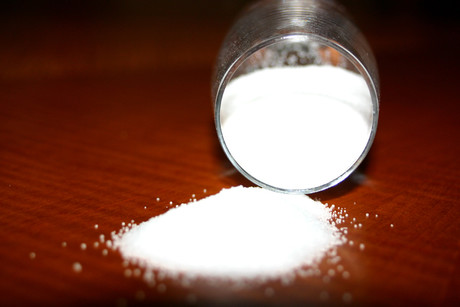Which 'healthy' food has more salt than a packet of chips?

In 2009, in response to the World Health Organisation’s aim to reduce global salt intake by 30% by 2025, the Australian Food and Health Dialogue (FHD) set voluntary salt reduction targets to be achieved in three major food categories — ready-to-eat breakfast cereals, breads and processed meats.
A new study has revealed how salt levels have changed since those targets were set, focusing on one of Australia’s staple foods — bread.
Researchers from The George Institute for Global Health analysed 1439 bread products from 2010–2017 and found some loaves contained more than a of third of the daily recommended salt intake in just two slices.
The study, which examined loaves, rolls, crumpets, bagels, English muffins and flat breads, revealed that rye breads contain on average 20% more salt than the FHD target of 400 mg/100 g. Flat breads such as wraps, naan, roti and tortillas also included unnecessary high levels of salt, on average containing a third more salt than white bread.
The study’s results, which were released to mark the 10th World Salt Awareness Week (20–26 March 2017), examined how salt levels have changed since 2010. Lead author Clare Farrand said the study showed salt levels in breads and bread rolls had dropped by a welcome 10% over seven years, but too many commonly eaten products still contain excessive amounts of salt.
“We know that excess salt in our diet increases blood pressure and the risk of stroke and cardiovascular disease, so our findings are incredibly worrying especially as many of the products that have the highest levels of salt are perceived by families as being the healthiest.”
The loaves with the highest salt levels were Schwob’s Dark Rye, with just one slice containing more than double the amount of salt as a serving of Kettles sea salt crisps1. Artisan baker Bowan Island’s Wholemeal Sourdough also stood out for its high salt content (1.6 g salt/100 g), making it almost three times saltier than the lowest option, Bill’s Certified Organic 100% Wholemeal Sourdough (0.6 g salt/100 g).
Farrand, public health nutritionist with The George Institute, added: “Whilst it is important to look at the salt content, it’s also worth noting these breads are a good source of fibre so do have something to offer in terms of dietary needs. Our advice is to look for high-fibre breads that are also low in salt.”
The report highlighted high levels of salt in flat breads, with Mission Chapattis Garlic topping the list with 2.3 g salt/100 g — 23 times more salt than the flat bread with the least amount of salt, Mission’s White Corn Tortillas.
Flat breads were not covered by the FHD salt reduction targets and only 34% of these products would meet the salt target. Crumpets also received a fail in the report, with not a single crumpet meeting FHD salt targets.
Farrand concluded: “The variation in salt levels amongst bread products is huge, which clearly demonstrates manufacturers can produce much lower salt products.
“What Australia needs though is a consistent drop in salt levels across all processed foods, not just in in some breads. This can only be achieved if we have comprehensive government and industry supported salt reduction targets for all product categories.”
Salty facts
- The average Australian adult eats around 8-10 g salt/day, almost double the World Health Organisation recommendation of <5 g/day.
- Processed and packaged foods account for around 75% of salt in the Australian diet.
- Globally it has been estimated that more than 1.65 million cardiovascular deaths/year are attributed to excess dietary salt intake.
- The current government’s Healthy Food Partnership is currently prioritising nutrients and foods and will set goals for reformulation and clear measures to track progress.
1. The average serving of Kettle original sea salt crisps contains 0.55 g salt/45 g serving.
Career upskilling: from food to product development chef
Former chef Zach Baudinet decided to take his years of food experience to the next level through...
A taste of flavours on trend in 2024
Understanding the flavours, ingredients and trends that will shape what we consume is essential...
What's new on the shelf this Easter?
Paper artwork-inspired chocolate eggs, sweet chilli products on show and bite-sized Polly Waffles...












